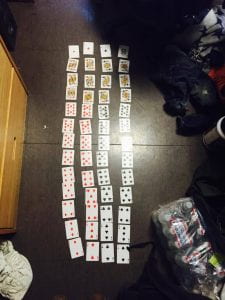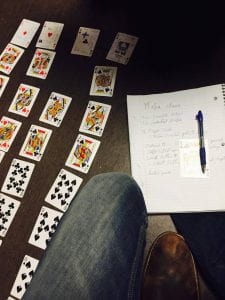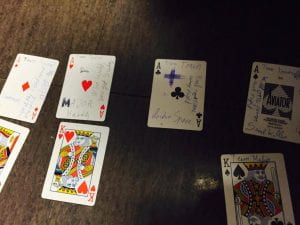The game I have developed is called Chaos Mafia. It is very much inspired/based on the old school party game mafia, and I have also introduced many concepts from the very similar web game “Town of Salem.” The only physical piece we use during playtime is a deck of cards which I have written roles on. The point of Chaos Mafia is the element of complete randomness and chance – just like in real life. The game starts by shuffling the cards, and distributing one card to each player. That card provides you with your name, role, and goal for the game. I have added many different roles so the game should run differently each time (some roles: major, veteran, jester, serial killer, investigator.) From there on the format is almost identical to mafia – town goes to sleep, something happens during the night and the next day they town tries to vote on why is guilty, and that person gets hanged. Various roles have the ability to affect some of the processes however.
One of the innovating things about the dada movement is how it was one of the first movements to not focus on making aesthetically pleasing objects. In the dada movement, the point is to rather produce works that challenge the accepted norm, and make the observer/participant ask themselves questions about the art (purpose), artist (role) and society (current relevant happenings). In order to make my game dada-like, I tried do make sure that the “art” or message didn’t lie in the designed game itself, but in the random events and combinations that make Chaos Mafia so lifelike. The combination of different cards being drawn and how the story is told by the artist leads to entirely different things happening each game. Another typical thing in the dada movement is the use of everyday objects. To encompass this – all the physical material I used was a deck of cards.


